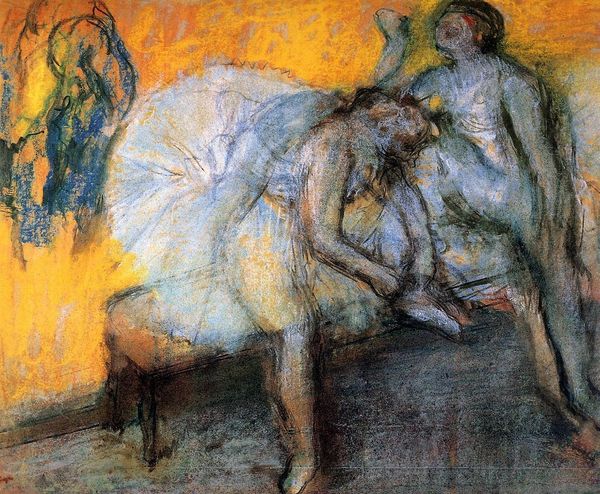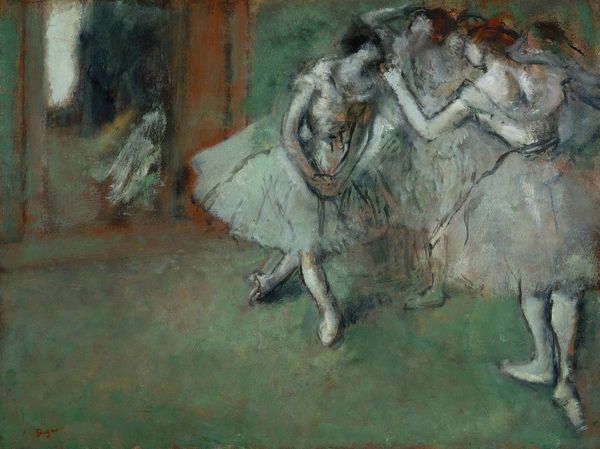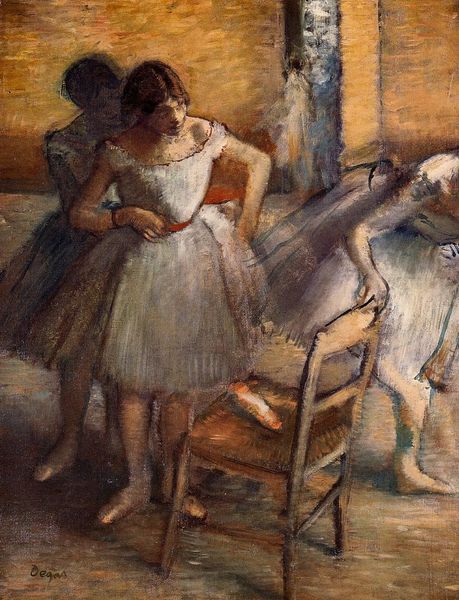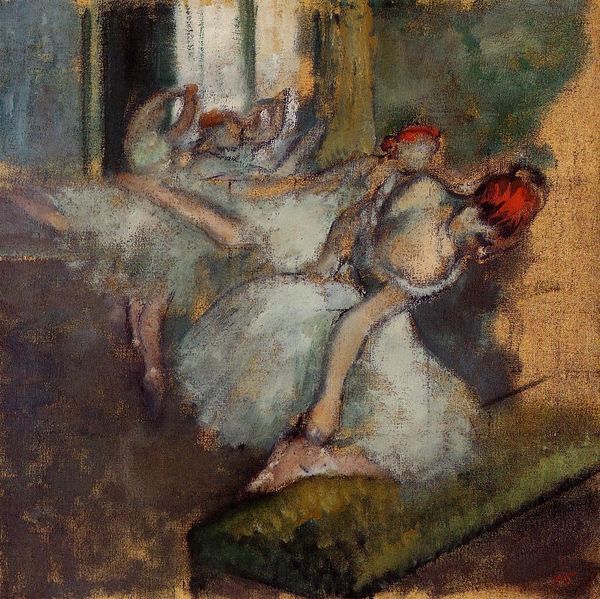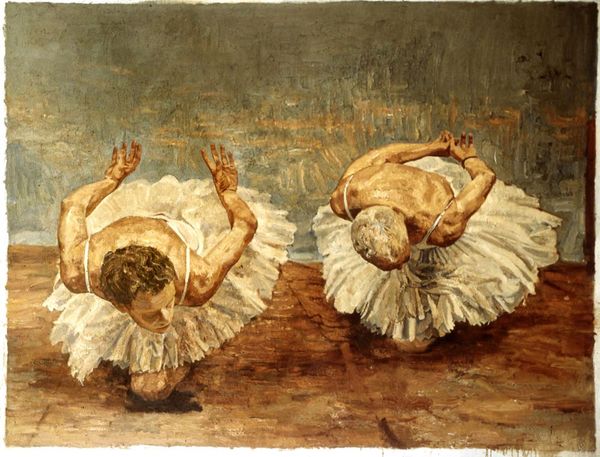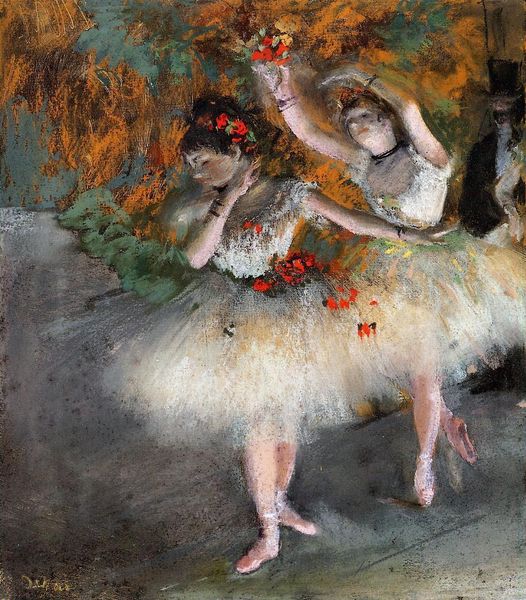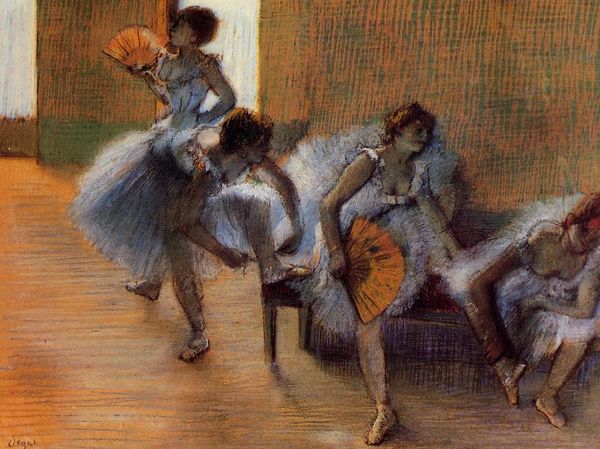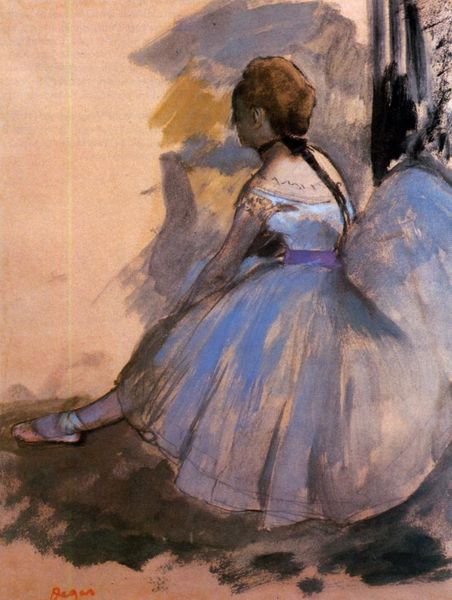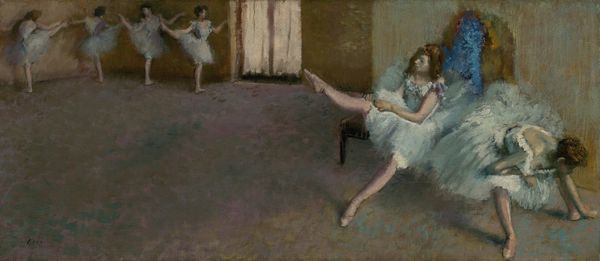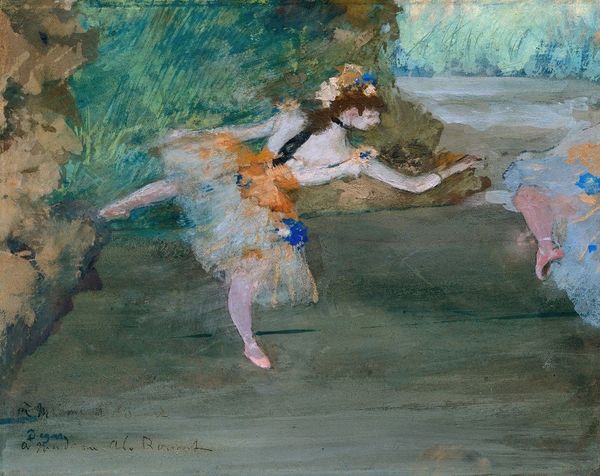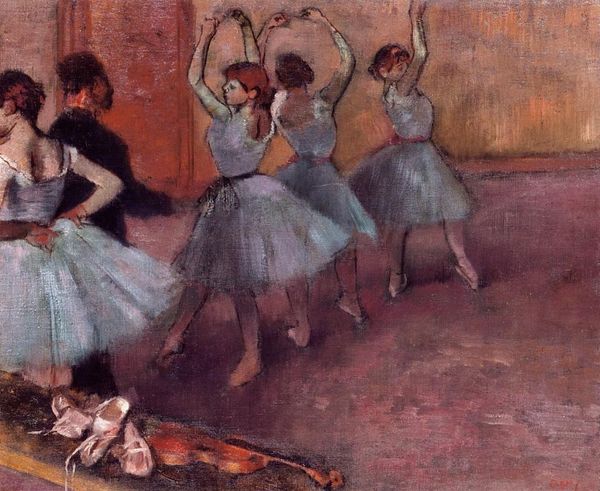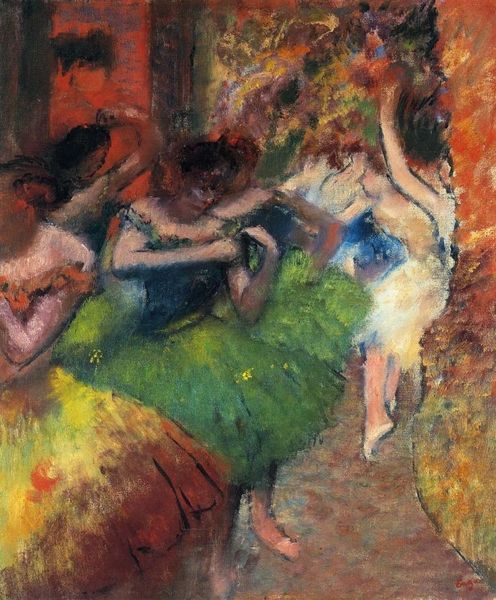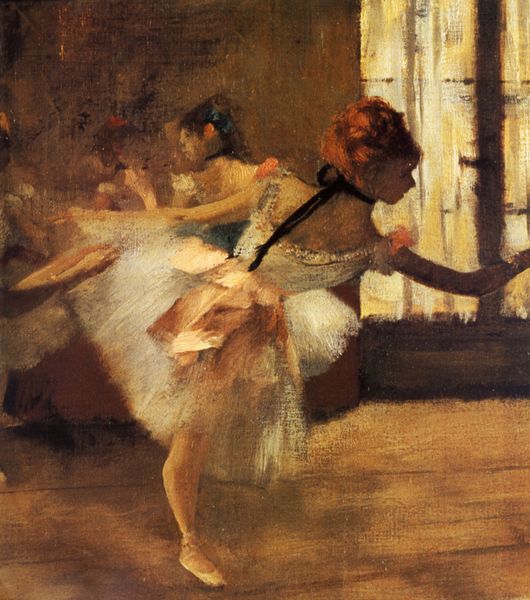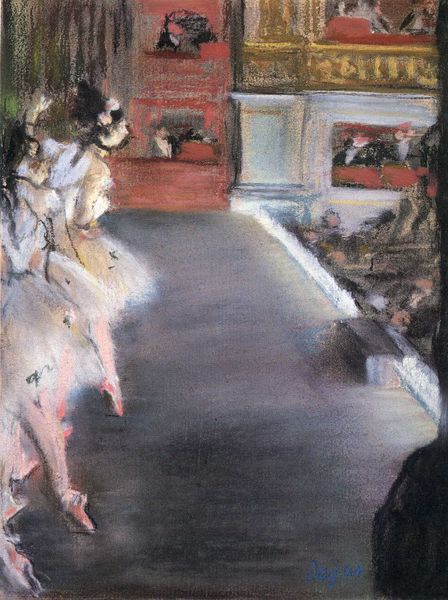
painting, oil-paint
#
painting
#
impressionism
#
oil-paint
#
figuration
#
oil painting
#
genre-painting
#
nude
Copyright: Public domain
Editor: Edgar Degas's "Two Ballet Dancers," painted around 1879 using oil paints, captures an intimate moment. The dancers are off-balance, their bodies tilted downwards; it’s as though we're peeking into a private space before a performance. How do you interpret the seemingly candid nature of this work within the context of 19th-century Parisian society? Curator: That's an interesting entry point. Degas was indeed fascinated by capturing the "real," but let's consider the broader context. Ballet at the time was deeply intertwined with societal expectations and, frankly, objectification of women. Do you notice how Degas crops the figures, seemingly randomly? Editor: Yes, it feels like a snapshot, rather than a formal portrait. Curator: Exactly. Now, consider this: Ballet dancers were often working-class women under the patronage of wealthy men. While the painting appears candid, could it also be argued that Degas is participating in, or perhaps commenting on, the voyeuristic culture surrounding the ballet? He gives us access to a world that was simultaneously glamorous and exploitative. The unconventional composition mimics the flâneur's gaze—roaming and detached. Does this shift your perception at all? Editor: It definitely adds a layer of complexity. I hadn't considered the potential power dynamics at play beneath the surface of this ostensibly "real" scene. I appreciate that this reframes my interpretation of the artist's intention. Curator: Precisely. By considering the societal frameworks surrounding the ballet, we can move beyond a simple appreciation of aesthetics and consider the artwork’s participation in broader conversations about class, gender, and the politics of representation. Editor: That gives me much to think about. This conversation encourages me to question if art is a product of its era. Thanks.
Comments
No comments
Be the first to comment and join the conversation on the ultimate creative platform.
